The 5 Most Infamous Captains in History Who Abandoned a Sinking Ship and Left Passengers to Perish (6 photos)
The captain is the ship's supreme commander, responsible not only for its safety but for the safety of every soul on board.
It's no coincidence that maritime tradition has a sacred rule, instilled in every sailor for centuries: the captain is the last to leave the ship. 
This isn't just a beautiful phrase, but a symbol of duty, courage, and responsibility.
When the Titanic struck the iceberg, Captain Smith refused to be saved. He helped evacuate women and children, commanded the sinking ship to the last, and, according to eyewitnesses, went down with it. His image became a symbol of naval honor and officer's duty.
However, in the history of navigation, there have also been commanders who were the first to grab a life preserver, leaving passengers to drown in the cold water.
Their names are forever inscribed in the shameful annals of the sea—alongside betrayal, fear, and a greed for life.
Today, we remember five captains who sank not only their ships, but also their honor. A true captain is one who stands firm to the end.
1. Francesco Schettino, "Captain Coward" of the Costa Concordia 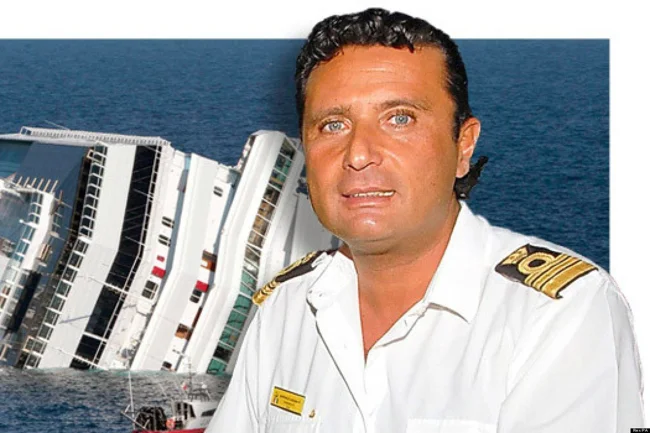
On January 14, 2012, the luxury Italian cruise ship Costa Concordia was sailing along the coast of Tuscany. On board were more than four thousand people, enjoying music, dinners, and champagne. The ship's captain, Francesco Schettino, with the telling surname Schettino, as it later turned out, decided to impress his girlfriend, Moldovan dancer Domnica Cemortatac (who was with him on the bridge), by performing the so-called "bow"—a welcoming maneuver for the residents of Giglio Island—after sailing too close to shore.
However, having sailed too close to shore, the liner struck underwater rocks, sustained a hole, and began to sink. Panic ensued. Passengers didn't know what to do. The lights went out, and the ship began to list. And just when the captain should have been directing the rescue, Schettino silently abandoned ship.
He escaped in one of the first lifeboats, leaving the crew and passengers to fend for themselves. The woman he'd veered off course for to demonstrate his skills was also among those remaining on board.
The disaster claimed 32 lives. The court found Schettino guilty of manslaughter and negligence, for which he received 16 years in prison.
A true disgrace for the man who should have been the last one on board.
2. Yannis Avranas – the captain of the Oceanos, who abandoned passengers to the rescue of circus performers 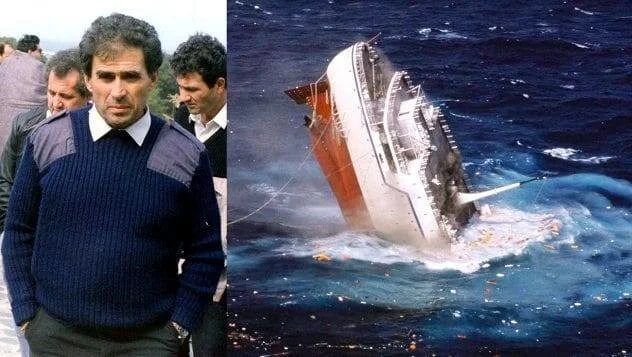
August 1991. The luxury Greek liner Oceanos is crossing stormy waters off the coast of South Africa. On board are hundreds of passengers, an evening of dancing, an orchestra, laughter, and a wonderful cruise atmosphere.
But everything changed in an instant: a severe storm, a water leak, and generator and engine failure. The ship began to lose control and drift.
While panic was spreading among the passengers on deck, Captain Yannis Avranas simply stepped out, announcing that the ship was sinking and everyone needed to save themselves.
Then he jumped into a lifeboat and swam to shore.
And surprisingly, instead of the captain, ordinary circus performers, as well as singers, comedians, and musicians hired to entertain tourists, began rescuing the people on board. They maintained contact with shore, distributed life jackets, and organized the evacuation. Miraculously, everyone was saved.
But Captain Avranas's shame will forever remain in history.
Being one of the first to leave the ship, Yannis Avranas even managed to pose for photographs on shore while his passengers were still fighting for their lives.
What most perplexed people was the captain's justification for his actions:
"When I give the order to abandon ship, it doesn't matter what time I leave. If anyone wants to stay, let them stay."
He wasn't jailed, but his name became synonymous with cold selfishness and shamelessness.
3. Lee Joon-seok – the tragedy of the South Korean ferry Sewol 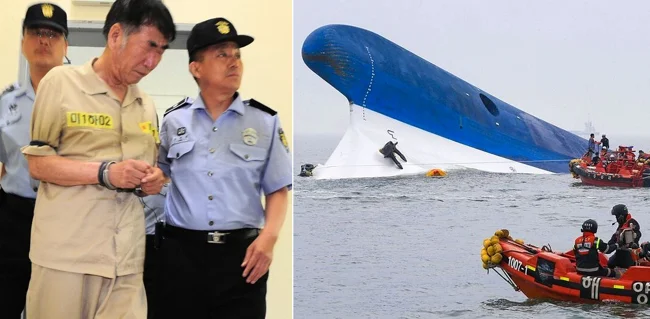
April 16, 2014 – a day South Korea will never forget.
The Sewol ferry, en route from Incheon to Jeju Island, was carrying 476 people, including 325 high school students on a school excursion.
When the ship suddenly stopped, began to grind and list, a warning came over the public address system:
"Stay where you are, don't move."
The children, obediently obeying, remained in their cabins, trusting that the captain knew what he was doing. But Captain Lee Joon-seok was already escaping in a lifeboat.
He failed to organize an evacuation, failed to transmit a distress signal in time, failed to help the crew, and simply abandoned everyone.
Passengers filmed videos showing water flooding the corridors, while children prayed, called their parents, and said goodbye.
Nearly 300 people died, most of them children and teenagers.
Society was shocked: the captain, entrusted with the lives of schoolchildren, abandoned them first.
The court found him guilty of murder and sentenced him to life imprisonment. Today, his name has become a curse in South Korea, and "Captain Sewol" a symbol of cowardice for which there is no forgiveness.
4. Hugo Larsen – the captain who asked, "Did you want me to drown?" 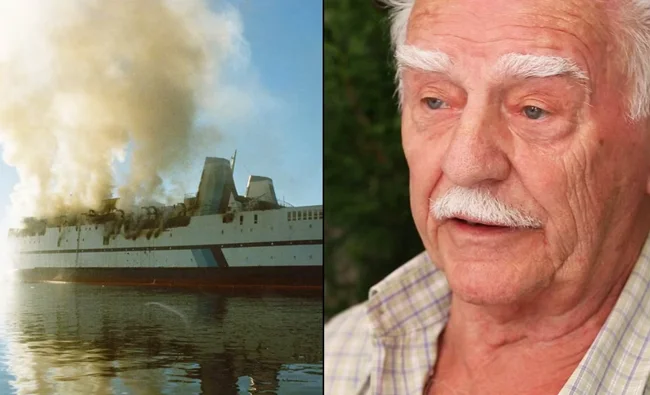
On April 6, 1990, the ferry Scandinavian Star departed Norway for Denmark.
It was supposed to be a routine trip from one port to another. But during the night, a fire broke out on the ship—arson, according to one theory. The flames quickly spread through the corridors, while passengers slept in their cabins.
The crew was disorganized, poorly trained, and multilingual.
Fire alarms, extinguishers, and smoke detectors were not working.
People were suffocated by the smoke, not knowing where to run.
Captain Hugo Larsen was no longer on board at this time.
He abandoned ship long before most of the passengers. As soon as he saw the first flames on the ship, Captain Larsen immediately donned a life jacket, lowered the sloop, and ran for his own life without even warning anyone.
When journalists asked why he abandoned the burning ship and abandoned his men to their fate, his answer became history:
"Would you like me to drown?"
158 people died.
A Danish court found the captain guilty of failing to properly ensure safety and sentenced him to 60 days in prison. Even the crew, the shipowner, and the company director received lengthy sentences.
But public opinion delivered a harsher verdict than any court could have delivered: lifelong shame.
5. Joseph Clarke – the captain who escaped from the steamship Jedda 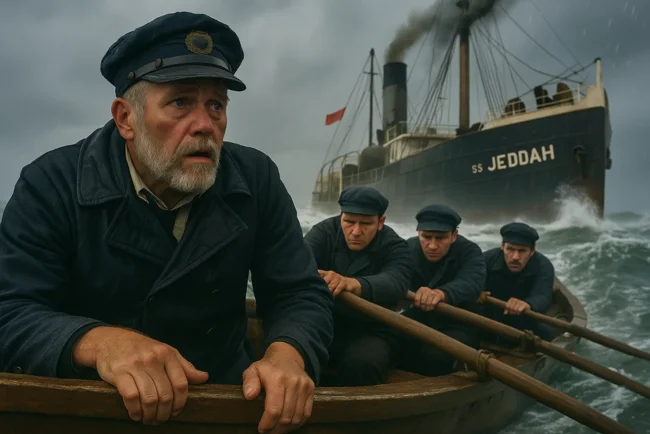
In July 1880, the British steamship Jedda, under the command of Captain Joseph Clarke, departed Singapore, bound for Mecca. There were 953 people on board, mostly pilgrims.
A few days later, the ship was caught in a hurricane in the Gulf of Aden. The wind howled, and the waves pounded the ship's sides like giant fists. The ship was listing, water was seeping into the holds, and the deck creaked under the onslaught of the elements.
Passengers were praying, women were screaming, and the crew was thrashing about, unable to cope with the raging elements.
Captain Clark, instead of directing the rescue of the ship and crew, fearing that the vessel would surely sink, called the officers to the wheelhouse and, after a brief consultation, made a decision that would forever inscribe his name in the history of infamy.
While hundreds of people on the lower decks panicked and wondered what to do, Captain Clark and several senior crew members lowered one of the lifeboats and abandoned ship.
There were no announcements, no orders, no attempt to evacuate passengers—the captain and his crew were already away from the ship in a lifeboat.
The next morning, the sea calmed.
The steamship Jedda did not sink, but continued to drift.
The passengers and some junior sailors, left to perish, managed to patch up the ship (damaged during the storm) with a combined effort and survive for several days at sea until another vessel spotted them and came to their aid.
The steamship was towed into port, and only then did the world learn that the ship the captain had thought sunk had actually survived without him.
Arriving ashore, Clark was the first to report to the authorities the "loss of the vessel and all crew." He had already begun writing his report when the rescued Jedda entered the harbor with the surviving passengers.
When the truth came to light, Captain Joseph Clarke was immediately arrested and placed in custody. At his trial, he was charged with gross misconduct, abandoning his ship and passengers, and negligence resulting in the deaths of 21 people.
Clarke defended himself, claiming he was certain the ship would inevitably sink and that there were not enough lifeboats for all 953 people. However, instead of prison, he received only three years' suspension from naval service—a lenient sentence that provoked outrage even among his fellow sailors.
But he forever etched his name in history, albeit in a far from noble manner.
























